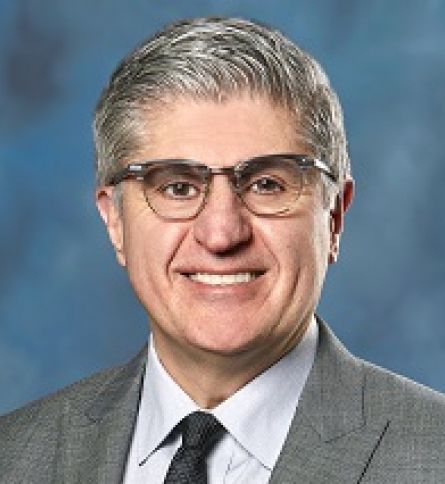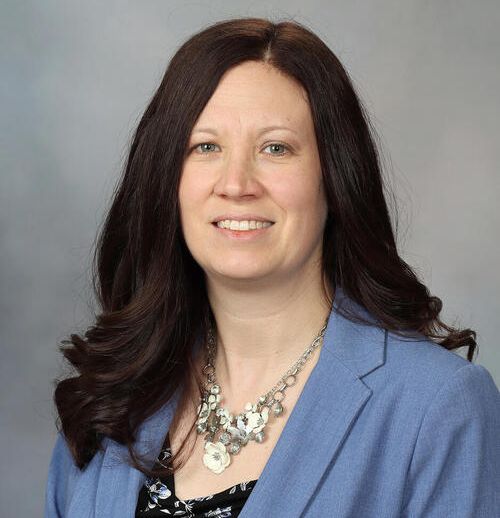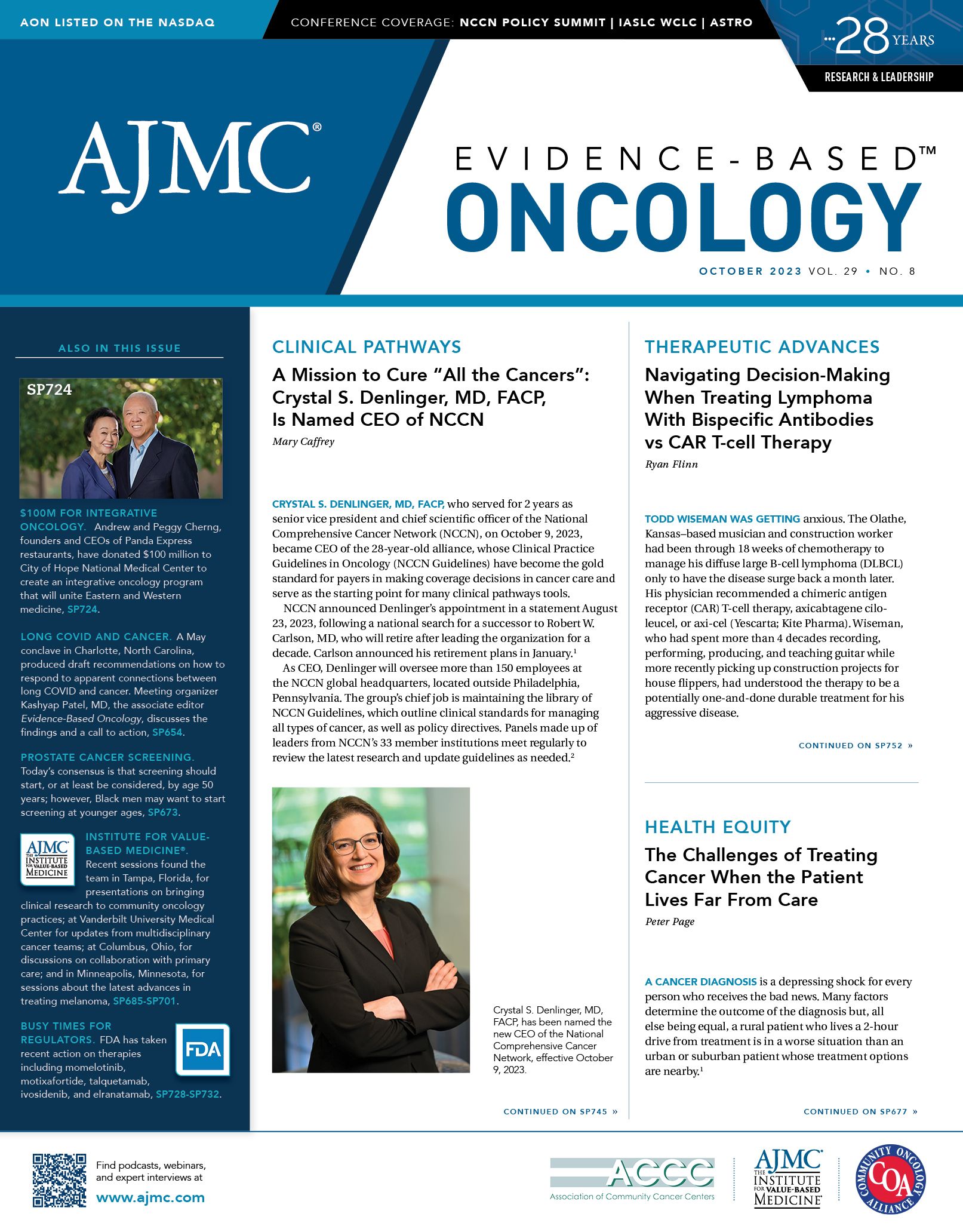- Center on Health Equity & Access
- Clinical
- Health Care Cost
- Health Care Delivery
- Insurance
- Policy
- Technology
- Value-Based Care
Novel Therapies Have Significantly Improved Melanoma Outcomes, With More Exciting Options to Come
Coverage from the Institute for Value-Based Medicine session with Minnesota Oncology.
For a long time, surgery was the only real treatment option available for melanoma, but there are new therapies that have significantly improved outcomes, at a cost. During an Institute for Value-Based Medicine event in Minneapolis, Minnesota, cohosted by The American Journal of Managed Care and Minnesota Oncology, a group of experts reviewed available treatment options, emerging therapies being studied, and what value-based care in melanoma should look like.
Economou

In the first presentation of the night, Sam Economou, MD, lead surgeon at Plastic Surgery Consultants in Bloomington, Minnesota, focused on the surgical treatment of melanoma. Melanoma is more prevalent in Minnesota than nationwide; it is the third most common malignancy in that state and fifth most common across the United States. The malignancy is also increasing the fastest in Minnesota.
Despite melanoma being the third most common malignancy in the state, it does not make the top 10 list for causes of death. However, there is something concerning around the age statistics. Among those aged 15 to 29 years, melanoma is the second most common malignancy, Economou said.
“That is something that is holding up in my practice,” he said. “I see younger and younger patients with melanoma every day.”
Although it may not seem obvious, plastic surgeons are ideally suited to manage melanoma, Economou said. Melanoma scars are big, and a plastic surgeon is well equipped to try to minimize that appearance, especially in cosmetically sensitive areas such as the face, the scalp, and the ears. In addition, skin grafts, flap reconstructions, amputations, nail bed ablation, and other forms of reconstruction often are necessary, and these also are areas that can benefit from management by a plastic surgeon, he explained.
Economou is the only plastic surgeon in the Twin Cities who performs a sentinel lymph node (SLN) biopsy, which is used to determine whether the melanoma has spread from the primary tumor site. During the procedure, the sentinel node is surgically removed and examined to see whether it has melanoma cells, which helps determine the stage of disease and guides further treatment decisions.
Depending on the size of the melanoma and depth, the treatment varies. For melanoma in situ, it is an excision of the biopsy site with a 5-mm margin. For patients with melanoma greater than 4 mm with a T4a/b depth, a preoperative PET/CT scan to rule out advanced stage III or IV disease would be ordered before proceeding with a 2-cm margin to the fascia with an SLN biopsy, Economou explained.
In addition, he considers involved deep margins and Clark Level IV depth as potential indicators for an SLN biopsy that should prompt a discussion with the patient. Conducting an SLN biopsy can help to stage these melanomas, but he prefers to discuss this with the patient so they can make a decision they are comfortable with. Patients with stage III disease are candidates for neoadjuvant therapy before surgery.
Economou also touched on DecisionDx-Melanoma, a 31-gene expression profile test used to identify the risk of recurrence or metastasis, including the likelihood of SLN positivity. Insurance may not cover the assay, and he does not incorporate it into his preoperative routine, but his medical oncology partners sometimes use it to facilitate adjuvant therapy discussion for patients with stage IIB and early stage IIIA disease.
“I am biased, but plastic surgeons are ideally positioned to provide total care of any [patient with] newly diagnosed melanoma, no matter what the location or its situation,” he concluded. “We complete staging, which then guides surveillance and treatment. My partnership with all of the medical and radiation oncologists in our group provides a seamless transition for those patients to complete their care.”
Ongoing Trials Offer More Options
Amatruda

For patients receiving therapy, systemic therapy with immunotherapy and targeted therapies have improved outcomes significantly over 15 years ago, explained Thomas Amatruda, MD, a medical oncologist with Minnesota Oncology. Now, patients have options in the adjuvant, neoadjuvant, and metastatic settings with ongoing trials to explore combining different immunotherapies and targeted therapies to improve responses and manage toxicities.
Anti–PD-1, anti–PD-L1, and anti–CTLA-4 antibodies are used to create an autoimmune disease directed against the melanoma. They can be used alone or in combination. Although combinations can be more effective, they have higher toxicity, Amatruda explained.
In addition, the strongest immunotherapies do not always work.
However, the longer someone goes without recurrence, the lower the likelihood of recurrence. For patients who have a complete response, providers must consider the next steps. If the patient’s immunotherapy is stopped, there is about an 80% likelihood they will stay in remission for at least 4 years. However, patients who are not in remission tend to progress when the therapy is stopped.
For patients who are unable to take immunotherapies, there are targeted therapies available, with BRAF being the main target. The choice between the various BRAF inhibitors depends on the toxicities: dabrafenib causes fever, vemurafenib causes diarrhea and skin rashes, and encorafenib causes abdominal pain. All of them have approximately a 12-month progression-free survival, so they are about equal in their effectiveness.
Which should be used first—immunotherapy or BRAF inhibitor? The phase 3 DREAMseq trial1 (NCT02224781) sought to answer that question and got a resounding answer: the trial was stopped early because the patients treated with immunotherapy first had longer survival by 2 years compared with the patients treated with a BRAF inhibitor first.
When looking to prevent recurrence, research has shown that both pembrolizumab2 and nivolumab3 in the adjuvant setting compared with placebo prevent not only relapse but also distant metastasis. Similarly, BRAF inhibitors can be used to reduce the likelihood of relapse with results similar to those of the immunotherapies.4
“So, the question is: why is this not the standard of care?” Amatruda asked. “Most of us in practice use the immune therapy first. The main reason is these BRAF inhibitors are difficult to take.” Another reason is that these therapies tend to work during the first year of treatment, but during the second and third years there is a higher risk of recurrence if they are stopped. The thought is that immunotherapies give more durable responses, although there have not been studies looking at this.
Patients who receive immune checkpoint inhibitors (ICIs) can experience a spectrum of autoimmune toxicities. Lisa Kottschade, APRN, CNP, FAPO, president of the Advanced Practitioner Society for Hematology and Oncology and chief operations officer for the Midwest Melanoma Partnership, discussed what to do when “the train comes off the rails.”
In the early days of giving patients ipilimumab, practitioners were confronted with situations they had not experienced. When chemotherapy was stopped, patients would get better in 4 days, but patients stopping immunotherapy “were just getting worse and worse and worse.” The adverse events (AEs) are the result of overactivating a patient’s immune system, and they can be mild and moderate, but they can also be very severe and fatal, she explained.
According to a study, grade 3 and 4 immune-related AEs (irAEs) occurred in 15% of patients on nivolumab, a PD-1 inhibitor; in 20% of patients on ipilimumab, a CTLA-4 inhibitor; and in 53% of patients on a combination of nivolumab and ipilimumab. The most common irAEs involve the skin, gastrointestinal tract, liver, and endocrine system. Life-threatening irAEs include the following:
- Pneumonitis, which may present asymptomatically and only be seen radiographically
- Neurotoxicity, which can have an incidence as high as 12% in combination therapy
- Cardiac disease, such as myocarditis, pericarditis, and cardiomyopathy
There are certain special populations at a higher risk of developing irAEs, such as those with a history of autoimmune conditions; the transplant population; patients with chronic viral infections; and patients with poor liver, renal, lung, or cardiac function. Because patients with prior autoimmune conditions are excluded from ICI clinical trials, there is not a lot of data on how to treat them, but often they will be considered for ICI therapy if they are not on chronic immunosuppression, high-dose steroids, or biologics. However, retrospective studies have found response rates may be lower for these patients.5
The transplant population is becoming a challenge to treat when these patients develop melanoma, Kottschade said. Patients who have a renal transplant have dialysis as a backup, but that is not an option for patients who had a heart or lung transplant. “There are some really tough conversations we have in the office about risk-benefit of treatment vs dying from their metastatic cancer,” she said.
Finally, looking to the future, Meredith McKean, MD, MPH, associate director of the Melanoma and Skin Cancer Research Program, Sarah Cannon Research Institute in Nashville, Tennessee, provided an overview of promising emerging research looking at trials in the adjuvant, neoadjuvant, and metastatic space—a common theme being treatment moving into earlier settings.
In the neoadjuvant setting, the phase 2 SWOG S1801 trial6 (NCT03698019) “was really a game changer,” she said. It found that pembrolizumab could be moved from the adjuvant setting, where it was being used, early into the neoadjuvant setting with benefits for patients. However, giving patients just an anti–PD-1 in the adjuvant setting “isn’t good enough,” and adding a CTLA-4 inhibitor brought a dramatic improvement in pathologic response.
In the currently recruiting phase 1/2 MORPHEUS-Melanoma trial (NCT05116202), nivolumab (anti–PD-1) plus ipilimumab (anti–CTLA-4) will be comparing with RO7247669 (an anti–PD-1 plus an anti–LAG-3), atezolizumab (anti–PD-L1) plus tiragolumab (anti-TIGIT), and RO7247669 plus tiragolumab.
This, she believes, is the future of melanoma treatment, which is copying what is being done in breast cancer: implementing treatments early to make the surgery easier. “Where we’re headed here is looking at a perioperative approach,” she said. “So, offering and administering neoadjuvant therapy [and then] going to surgery.”
In the adjuvant setting, McKean highlighted a personalized messenger RNA cancer vaccine being developed by Merck and Moderna. The phase 2 KEYNOTE-942 study (NCT03897881) found a 44% reduction in risk of recurrence or death compared with pembrolizumab monotherapy.7 At 18 months, the recurrence-free survival was 78.6% in the vaccine arm and 62.2% in the monotherapy arm.
In the adjuvant setting, again, she pointed out that the trend is moving treatment earlier. There are novel therapies now moving into this setting.
In the metastatic setting, tumor-infiltrating lymphocytes (TILs) have been in development for decades. Tumors are resected from patients and lymphocytes are stimulated to grow and produce. The patients then undergo lymphodepletion, the TILs are reinfused, and the patients receive high-dose IL-2. “[It’s a] pretty exciting therapy but a very intensive therapy,” McKean said. One study from 2022 found that patients randomly assigned to TIL therapy had a 50% reduction in disease progression or death compared with the standard of care (ipilimumab).8
There is also a vaccine from BioNTech being studied in the metastatic space. This vaccine is considered more of an off-the-shelf vaccine, she explained. There are trials evaluating the vaccine by itself or with cemiplimab. Early results from a phase 1 trial9 (NCT02410733) have shown deep and early responses in patients, with about 50% having tumor shrinkage in the refractory setting. There is an ongoing phase 2 trial (NCT04526899).
McKean also ran through a handful of trials with novel targeted therapies targeting NRAS and BRAF. These therapies being explored are tumor agnostic and should work regardless of whether they are treating melanoma or lung cancer. “The future’s bright in melanoma,” McKean concluded.
Delivering Care in the Community Setting
The night finished with a panel discussion by all the previous speakers, who were joined by Lalan Wilfong, MD, senior vice president for Payer and Care Transformation at The US Oncology Network. The discussion was moderated by Rhonda Henschel, vice president for payer relations at The US Oncology Network.
Practices in the community can provide rapid access to care—faster than what patients might receive elsewhere, Economou said. Usually, the patients who come to his practice are seen and operated on within 2 weeks. “That peace of mind [patients get from being treated quickly], I think is important and it gives the patients a feeling that they are a priority,” he said.
Many plastic surgeons in Dallas, Texas, where Wilfong practices, only do procedures like facelifts, which are more financially lucrative than melanoma surgery. Many dermatologists perform surgery but are not trained to do things like an LN biopsy. “From my experience, it can be difficult when you have somebody with advanced melanoma to find someone who’s experienced [and] understands the literature to be able to do melanoma work,” he said.
For a long time, surgery was the only treatment, but now there are very effective—and very expensive—therapies, Wilfong said. Immunotherapies can run up to $20,000 per month; adding CTLA-4 inhibitors increases the cost by another $15,000 per month. On top of that, there are toxicities that must be managed.
However, the increased costs are correlating to improved patient outcomes. “These patients do live much better, longer lives with the therapies that are being given,” Wilfong said. “But I think that’s one of the things that we have to think about…. As we continue to add on therapies, we’re adding on costs. And at some point, you have to step back and think, how much can we do in this disease space?”
In McKean’s clinic, there is a financial counselor to speak with patients about the cost of therapy, but it remains a challenge because they do not really have the data to tell patients how much their therapy is going to cost. “That’s part of the discussion we can’t personalize: What does that look like at the end of the day for that patient from a financial standpoint?”
Kottschade

Kottschade explained that in her clinic, managing patients with toxicities is given a lot of attention. In some practices, the oncologist may see a patient with diarrhea and prescribe them prednisone. The patient would self-taper and the oncologist would not see the patient for a month because there were no earlier openings. The result was that those patients rebounded and ended up in the hospital.
“Whereas we follow them on basically a weekly basis,” she said. “And we don’t give tapers to our patients; we assess them first and then tell them what their next step is. We were finding that was cutting down on times on prednisone…[and] was decreasing hospitalizations and [emergency department] visits.”
Treatment expectations must be managed with better data on predicted markers for toxicity and efficacy so patients can make informed choices. If a treatment has a 10% chance of working, 90% of the patients think they will be in that 10%, Amatruda said.
McKean agreed that predictive markers represent a big area of need. “Gosh, if we knew which patients were the ones that were going to benefit and which were the ones that were going to have toxicities, that would certainly really help us guide our treatment decisions,” she said.
On the topic of clinical trials, McKean said that with so many available, evaluating which patient is eligible and which trial is the best fit can be challenging. Sarah Cannon’s goal is getting research into the community setting to reach as many patients as possible.
Kottschade added that a more liberal eligibility criteria would be good to see going forward, because not everyone fits into the tidy box of a clinical trial. For example, once the checkpoint inhibitors were approved, investigators began to understand quickly that different patients responded differently. She sees more toxicity in the adjuvant setting than the metastatic setting, which is probably an off-target effect.
Henschel closed the discussion by allowing each of the panelists to impart the advice they give patients with melanoma around navigating the health care system to receive the best care. Sarah Cannon is trying a multidisciplinary tumor board to bring different practitioners together to educate patients. McKean said patients will come to see her as a medical oncologist but forget to follow up with a dermatologist.
“Maybe a dermatologist is going to make more of a difference in their survival with catching a second melanoma early than I would as a medical oncologist doing surveillance,” she said.
Economou suggested that patients ensure they are seeing practitioners who are dedicated to melanoma care in not just surgery but medical oncology. “The care over the years…has just become so much more complex,” he said. “And I think patients benefit from going to providers who are interested and want to care for these patients.”
Amatruda said patients should find a care team that they can talk with and understand, and that they should feel comfortable asking questions until they truly understand their choices. For something as complex as advanced melanoma, more time needs to be spent speaking with care providers, understanding the options, and discussing each one.
Kottschade wants patients to be open to the idea of a clinical trial because not enough are being enrolled across cancer care in general. She said clinical trials should always be part of the discussion and part of a treatment plan.
Wilfong brought the conversation back to toxicities and educating patients about them. He gave the recent example of a patient who said she did not have diarrhea but was going to the bathroom a lot, and it turned out to be a grade 1 irAE.
“I think that education is really important,” he said. “[It’s important to make] sure that we, as a care team, know to ask the right questions, because patients sometimes don’t always understand what we’re asking.”
References
1. Atkins MB, Lee SJ, Chmielowski B, et al. Combination dabrafenib and trametinib versus combination nivolumab and ipilimumab for patients with advanced BRAF-mutant melanoma: the DREAMseq Trial-ECOG-ACRIN EA6134. J Clin Oncol. 2023;41(2):186-197. doi:10.1200/JCO.22.01763
2. Eggermont AMM, Blank CU, Mandala M, et al. Adjuvant pembrolizumab versus placebo in resected stage III melanoma. N Engl J Med. 2018;378(19):1789-1801. doi:10.1056/NEJMoa1802357
3. Weber JS, Poretta T, Stwalley BD, et al. Nivolumab versus placebo as adjuvant therapy for resected stage III melanoma: a propensity weighted indirect treatment comparison and number needed to treat analysis for recurrence-free survival and overall survival. Cancer Immunol Immunother. 2023;72(4):945-954. Published correction appears in Cancer Immunol Immunother. 2023;72(4):955.
4. Dummer R, Hauschild A, Santinami M, et al. Five-year analysis of adjuvant dabrafenib plus trametinib in stage III melanoma. N Engl J Med. 2020;383(12):1139-1148. doi:10.1056/NEJMoa2005493
5. Kennedy LC, Bhatia S, Thompson JA, Grivas P. Preexisting autoimmune disease: implications for immune checkpoint inhibitor therapy in solid tumors. J Natl Compr Canc Netw. 2019;17(6):750-757. doi:10.6004/jnccn.2019.7310
6. Patel S, Othus M, Prieto V, et al. Neoadjuvant versus adjuvant pembrolizumab for resected stage III-IV melanoma (SWOG S1801). Presented at: European Society for Medical Oncology Congress 2022; September 9-13, 2022; Paris, France. Abstract LBA6.
7. Khattak A, Weber JS, Meniawy T, et al; on behalf of Moderna Author’s Group. Distant metastasis-free survival results from the randomized, phase 2 mRNA-4157-P201/KEYNOTE-942 trial. J Clin Oncol. 2023;41(suppl 17):LBA9503. doi:10.1200/JCO.2023.41.17_suppl.LBA9503
8. Rohaan MW, Borch TH, van den Berg JH, et al. Tumor-infiltrating lymphocyte therapy or ipilimumab in advanced melanoma. N Engl J Med. 2022;387(23):2113-2125. doi:10.1056/NEJMoa2210233
9. BioNTech receives FDA fast track designation for its FixVac candidate BNT111 in advanced melanoma. News release. BioNTech. November 19, 2021. Accessed September 30, 2023. https://bit.ly/3gEJR0D

Nathan Walcker Discusses Value-Based Oncology Care Initiatives at FCS
September 8th 2023Nathan Walcker, CEO at Florida Cancer Specialists & Research Institute (FCS), highlights some of the recent partnerships and initiatives at FCS to improve community-based oncology care from a value-based perspective.
Listen
Oncology Onward: A Conversation With Dr Debra Patt of Texas Oncology
August 1st 2023Debra Patt, MD, PhD, MBA, joins hosts Emeline Aviki, MD, MBA, and Stephen Schleicher, MD, MBA, for episode 2 of our newest podcast, "Oncology Onward: Conversations With Innovators and Changemakers in Cancer Care."
Listen
